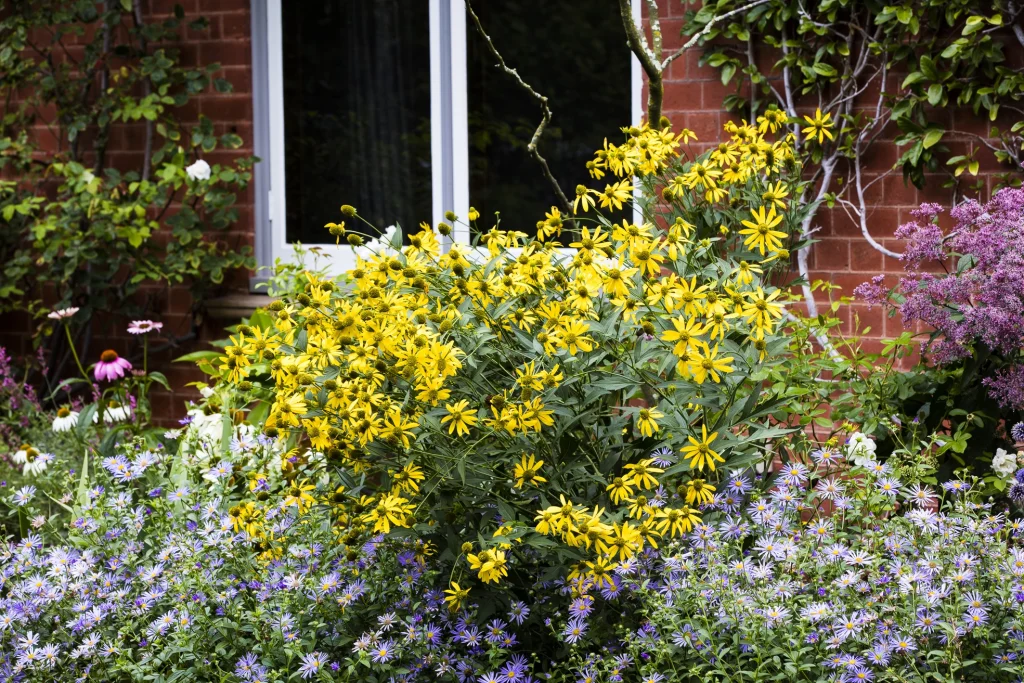Creating a bee-friendly garden can benefit you, your community, and the ecosystem. You can learn more about the importance of bees here. If you have a beehive in your garden, it’s vital to ensure that you have created a bee-friendly garden as this will attract more bees to your hive and therefore increase the volume of honey production and overall pollination in your garden.
So, how do you create a bee-friendly garden? We’ve listed our top three tips below:
Tip 1 – Plant a diverse range of plants
It’s essential to plant a diverse range of plants in your garden that differ in size and colour. Different bee species are attracted to different kinds of plants. Some love flowers in blue and purple hues, while others are drawn to mauve, pink, yellow and white flowers.
Along with different sizes and colours, you also need to ensure the flowers are either long-flowering or you have flowers that bloom in differing seasons. For example, Sedum ‘Autumn Joy’ flowers bloom in the autumn months, whereas Hellebores bloom in winter.

If you’re a flower lover, blooms such as Alyssum, Cornflower, Cosmos, Echinacea (one of our personal favourites), Geranium, Roses and Sunflowers are excellent for attracting bees. Australian native plants, including Banksia, Callistemon, Grevillea, Eucalyptus and Melaleuca, are also great inclusions in a bee-friendly garden.
Bees also love edible plants such as herbs, fruits and vegetables. The relationship between bees and edible plants is a win-win for you and the bees – they get the pollen and nectar from the plants, and in return, they help to produce bigger, healthier fruits and vegetables. Thyme, lavender and sage are a favourite with bees, along with citrus, berries, apple and plum trees. If you’re more of a vegetable fan, bees also love capsicum, chilli, cucumber and pumpkin.

Tip 2- Pollinator house
A pollinator house provides accommodation for solitary bees (which most native bees in Australia are) and allows them to nest by offering cavities to live in. A pollinator house can be made from natural materials such as timber, bamboo, logs or even out of recycled furniture and cabinetry like old cupboards and drawers.
Depending on the pollinator you are trying to attract, creating a pollinator house can be as simple as drilling small holes into a block of wood. Alternatively, there are pollinator house products on the market that are pre-made and available for purchase. A great and affordable option is Flow’s Pollinator House.

Tip 3 – Avoid harmful insecticides and pesticides
Insecticides and pesticides are designed to kill garden pests; this also, unfortunately, includes bees. If your goal is attracting bees to your garden, we recommend avoiding them altogether. If you need to apply an insecticide, opt for a product with a low toxicity for bees. If absolutely necessary, you can use pesticides when bees are less active, which is in the evening or on cooler days. As bees are often attracted to the flower of plants, avoid applying directly onto the flower, as this will further minimize the harm to bees.

At Ian Barker Gardens, all of our gardens are designed with the intention of attracting bees to the landscape, as this ensures the longevity of the garden. Our expert horticulturists carefully select plants suitable for the climate in which you live and to attract bees all year round. Click here to learn more about our design process and how we can help you create a bee-friendly garden.


